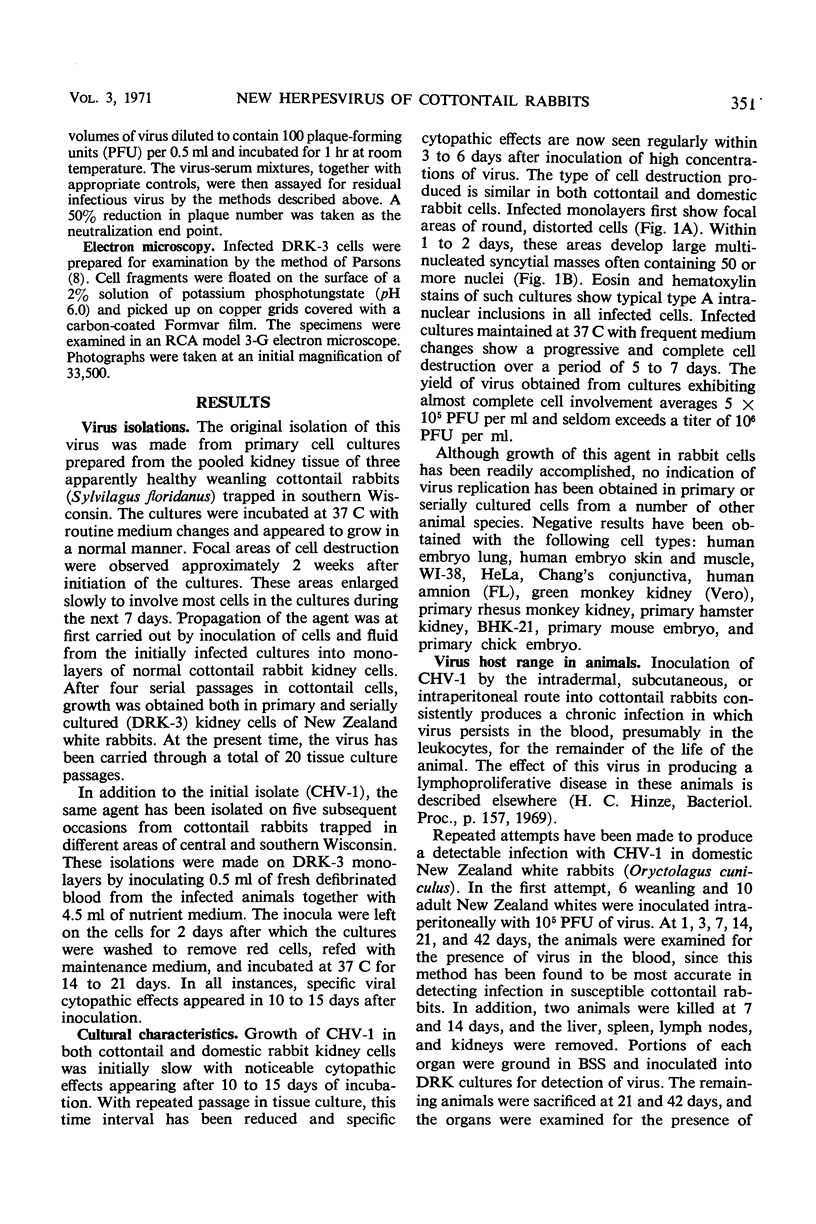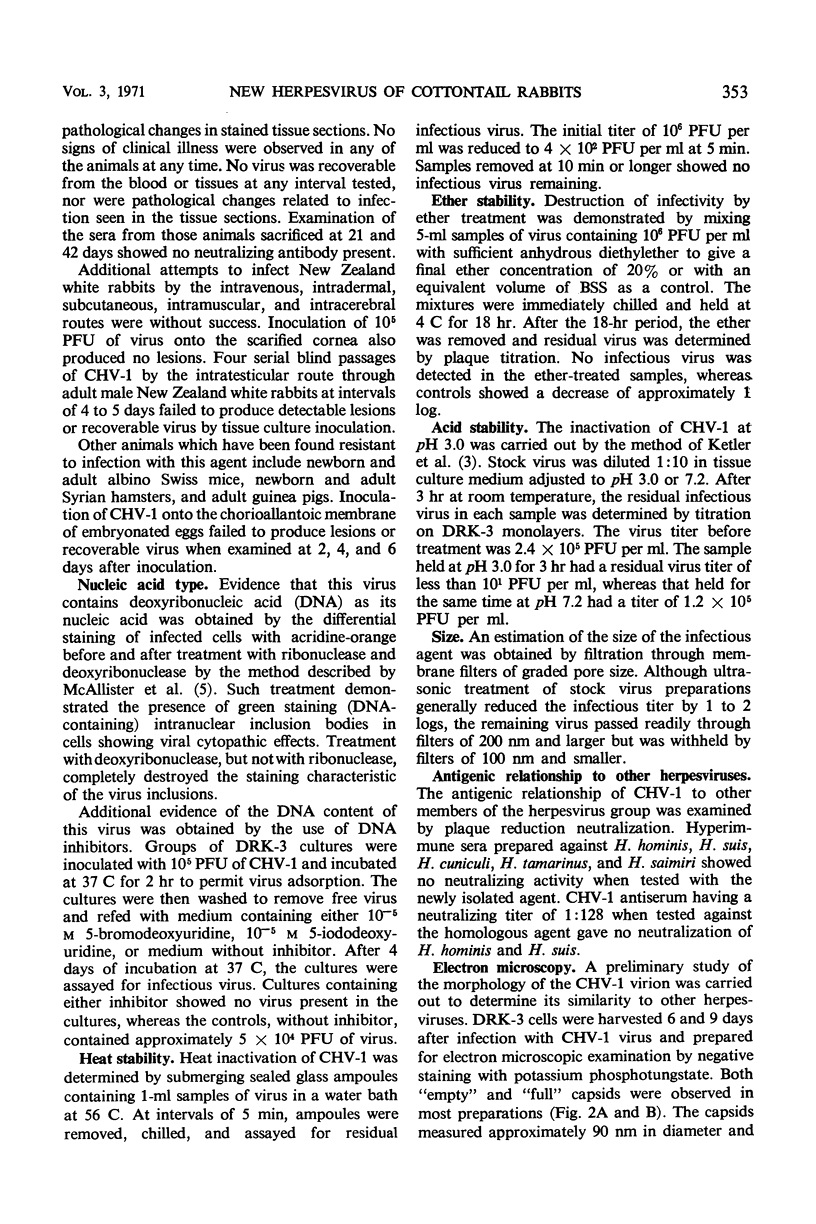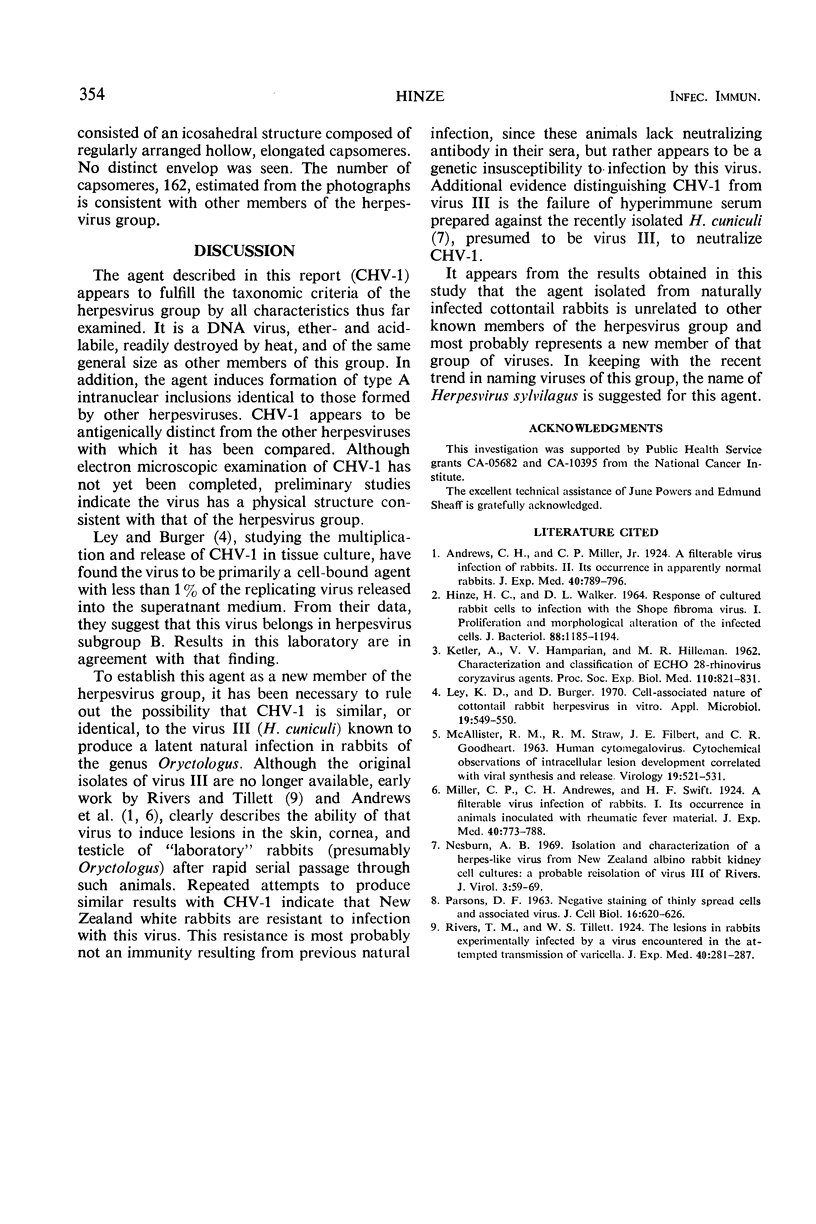Abstract
A viral agent has been isolated from naturally infected wild cottontail rabbits (Sylvilagus floridanus). The virus appears to have the general physical, chemical, and biological properties of the herpesvirus group. It differs significantly in host range and antigenic structure from the previously recognized herpesviruses and is proposed as a new member of this group of viruses. The name of Herpesvirus sylvilagus is suggested for the agent.
Full text
PDF




Images in this article
Selected References
These references are in PubMed. This may not be the complete list of references from this article.
- HINZE H. C., WALKER D. L. RESPONSE OF CULTURED RABBIT CELLS TO INFECTION WITH THE SHOPE FIBROMA VIRUS. I. PROLIFERATION AND MORPHOLOGICAL ALTERATION OF THE INFECTED CELLS. J Bacteriol. 1964 Oct;88:1185–1194. doi: 10.1128/jb.88.4.1185-1194.1964. [DOI] [PMC free article] [PubMed] [Google Scholar]
- KETLER A., HAMPARIAN V. V., HILLEMAN M. R. Characterization and classification of ECHO 28-rhinovirus-coryzavirus agents. Proc Soc Exp Biol Med. 1962 Aug-Sep;110:821–831. doi: 10.3181/00379727-110-27662. [DOI] [PubMed] [Google Scholar]
- Ley K. D., Burger D. Cell-associated nature of cottontail rabbit herpesvirus in vitro. Appl Microbiol. 1970 Mar;19(3):549–550. doi: 10.1128/am.19.3.549-550.1970. [DOI] [PMC free article] [PubMed] [Google Scholar]
- Nesburn A. B. Isolation and characterization of a herpes-like virus from New Zealand albino rabbit kidney cell cultures: a probable reisolation of virus 3 of Rivers. J Virol. 1969 Jan;3(1):59–69. doi: 10.1128/jvi.3.1.59-69.1969. [DOI] [PMC free article] [PubMed] [Google Scholar]




